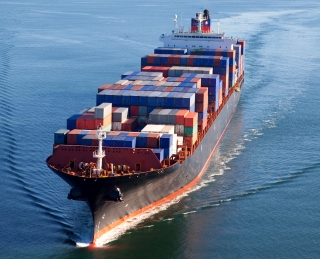 Ocean carriers have successfully implemented a series of general rate increases (GRIs) recently, but a number of threats could still derail their return to profitability, warns Drewry Shipping Consultants in an April 3 press statement.
Ocean carriers have successfully implemented a series of general rate increases (GRIs) recently, but a number of threats could still derail their return to profitability, warns Drewry Shipping Consultants in an April 3 press statement.
In its latest quarterly Container Forecaster report, Drewry cautioned against a “false sense of security,” even as cargo liners were able to impose higher rates on the Asia-North Europe trade.
“Demand is by no means certain and we have downgraded our 2012 global forecast to 4.6 percent, largely on the basis of a weak Eurozone, crippled by debt,” the London-based shipping consulting firm said.
The Container Forecaster revised its assessment of industry losses to at least US$6.5 billion in 2011. Because the industry will take some time to make up for lost ground, Drewry still expects the first quarter of 2012 to show weak financial results for carriers, “although their position will improve as the year progresses.”
Drewry said that while the huge $800 per 20-foot equivalent unit (TEU) rate increases on the Asia-Europe trade were successful levied, the industry still faces threats to a return to profit, including the reluctance to cut capacity.
“It seems that their recovery into profit is very much dependent on this resolve to maintain the GRIs and little else since they resolutely refuse to put significant tonnage into lay-up. This year will see another 59 ships of at least 10,000 TEU enter the global fleet,” it noted.
Neil Dekker, head of Drewry’s container research, stated, “Until the inherent structural capacity is truly tackled, we will continue to have periodic and violent bouts of overcapacity that will keep rates and operating margins yo-yoing up and down.”
As of early March, the idle or inactive fleet had grown to around 5.4 percent of total global capacity, but only 47 vessels above 5,000 TEUs were included in this figure and a number of these are being redeployed on new services.
In addition, five new services are being launched in the trans-Pacific before June, which will put continued pressure on the spot rates and the ability for carriers to push through the significant increases they are seeking in the current May contract negotiations, says Drewry.
“Given that Asia-US demand is still uncertain, this desire to re-introduce so much new capacity, rather than lay-up tonnage, could be a de-railer if there is a weak peak season. The cascading of larger vessels into the North-South trades is also becoming more noticeable and could also be a threat to their stability,” it continued.




